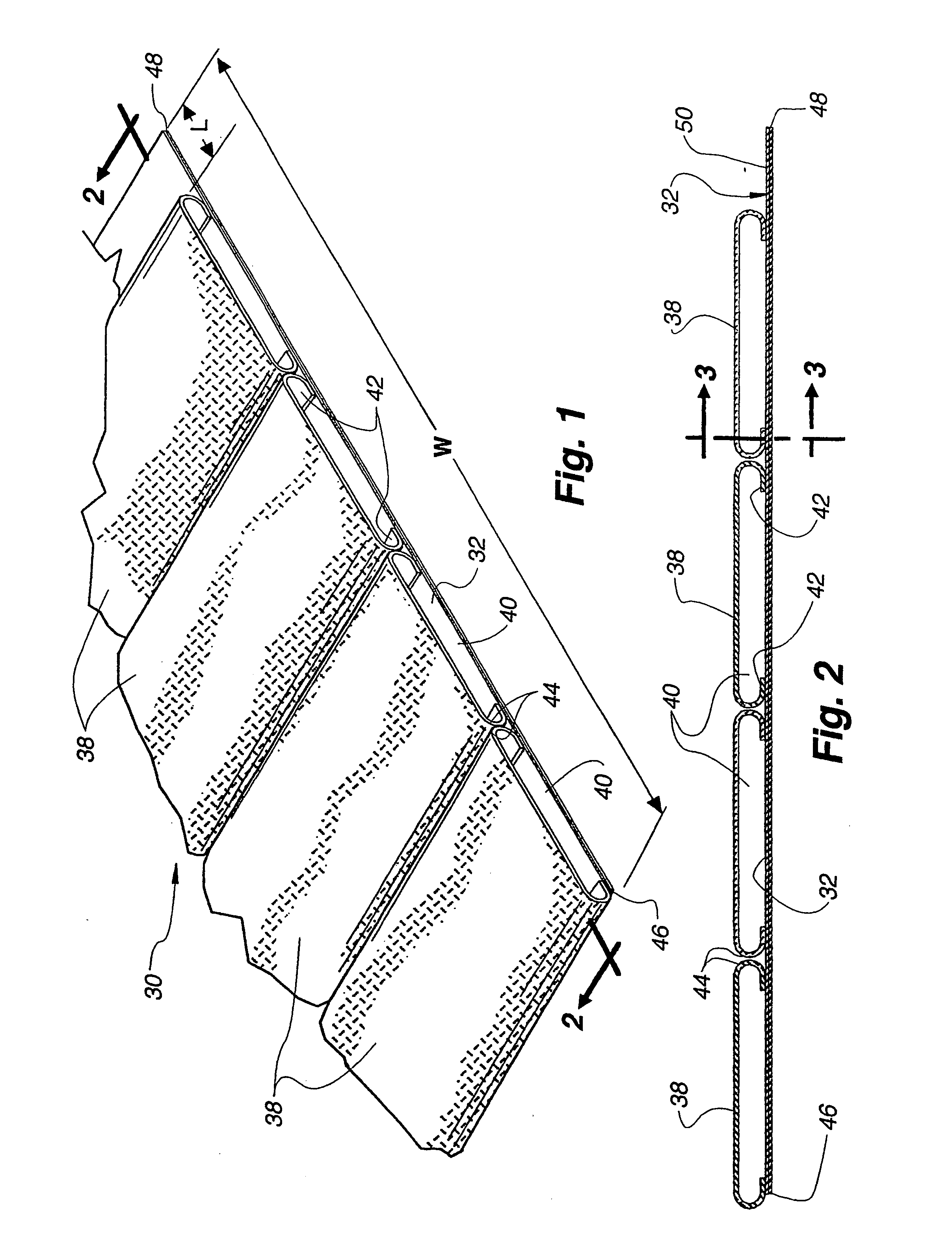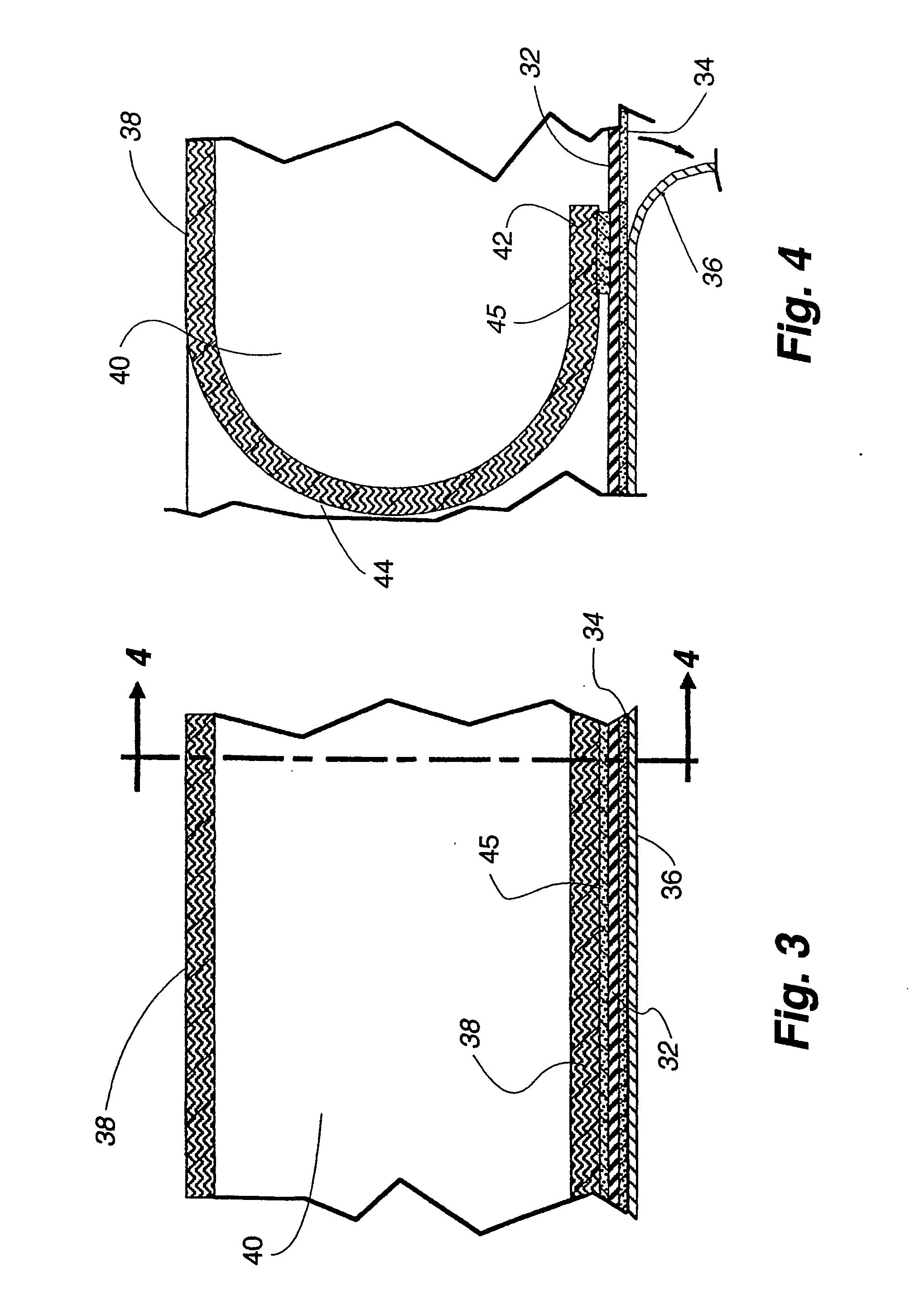Covering for architectural surfaces and method of forming and applying same
a technology for architectural surfaces and coverings, applied in the field of coverings for architectural surfaces, can solve the problems of seams between adjacent sheets of fabric wall coverings, not always desirable, and the inability of foam polymers to provide independent means for desirably controlling acoustics, and achieve the effect of controlling acoustics and soft and warm appearan
- Summary
- Abstract
- Description
- Claims
- Application Information
AI Technical Summary
Benefits of technology
Problems solved by technology
Method used
Image
Examples
Embodiment Construction
[0079] A first embodiment 30 of the covering of the present invention can be seen in FIGS. 1-4 to comprise an elongated base sheet or strip of material 32, having a width W, with the strip being adapted to be secured to an architectural surface (not shown) in any suitable manner. The length of the material would depend on the height of the surface on which it is to be mounted if mounted vertically, or the width of the surface if mounted horizontally. The underface of the base material 32 could have a preapplied adhesive that is activated with water, could be an adhesive with a tear-away paper covering or could have no adhesive but be adapted to be secured to an architectural surface with an adhesive that has been preapplied to the architectural surface in a manner to receive the covering of the present invention. In the embodiment of the invention illustrated in FIGS. 1-4, a tacky adhesive 34 is applied to the base sheet material on its undersurface and covered with a tear-away shee...
PUM
| Property | Measurement | Unit |
|---|---|---|
| Thickness | aaaaa | aaaaa |
| Flexibility | aaaaa | aaaaa |
| Area | aaaaa | aaaaa |
Abstract
Description
Claims
Application Information
 Login to View More
Login to View More - R&D
- Intellectual Property
- Life Sciences
- Materials
- Tech Scout
- Unparalleled Data Quality
- Higher Quality Content
- 60% Fewer Hallucinations
Browse by: Latest US Patents, China's latest patents, Technical Efficacy Thesaurus, Application Domain, Technology Topic, Popular Technical Reports.
© 2025 PatSnap. All rights reserved.Legal|Privacy policy|Modern Slavery Act Transparency Statement|Sitemap|About US| Contact US: help@patsnap.com



